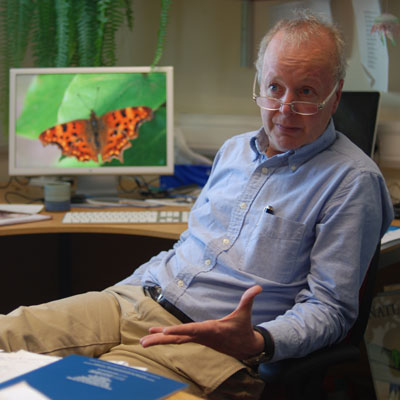Adrian Bird - epigenetics and Rett Syndrome
4-April-2011
Adrian Bird - epigenetics and Rett Syndrome
 Rett Syndrome is a distressing disorder of young girls. They seem to grow fine at first, but around the age of 2 or 3 normal development ends.
Rett Syndrome is a distressing disorder of young girls. They seem to grow fine at first, but around the age of 2 or 3 normal development ends.
They stop talking. They lose the ability to walk. They stop using their hands properly. They never get better.
Rett Syndrome is caused by a mutation on a gene called MECP2. This means the protein that should be produced by the gene isn't. It's the lack of this protein in the cells of the brain that causes Rett Syndrome.
The world's leading expert on the MECP2 gene is Edinburgh University's Adrian Bird, says the Rett Syndrome research Trust. "His lab studies the role of DNA methylation, a fundamental mechanism of controlling gene expression. "
Professor Bird is happy to be part of an enterprise that could take a hundred years, he told us - namely understanding how living cells work. But he hopes to make progress with Rett Syndrome much sooner than that.
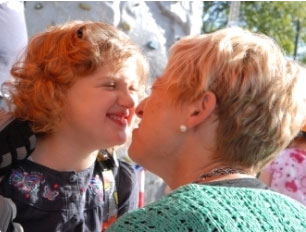 Bad gene
Bad gene
Rett Syndrome is one of the autistic spectrum disorders, explains Professor Bird, currently the director of the Wellcome Trust Centre for Cell Biology. "Autism in general is caused by mutations in many genes. But within the autistic spectrum are specific diseases caused by mutations in known genes.
"Fragile X Syndrome, for instance, is caused by a mutation in the FMR1 gene. Rett's Syndrome is caused by a mutation in the MECP2 gene. This is also located on the X chromosome. We discovered the protein that this gene expresses in the early 1990s.
"Some years later another group of scientists discovered that mutation of this gene causes Rett Syndrome. So our research since then has had a focus on that."
Because the MECP2 gene is located on the X chromosome, girls get two copies of it, since they have two X chromosomes. Boys get only one, since they have an X and a Y chromosome. (That's what makes them boys.)
 So if the MECP2 gene is bad, the boys get the full effect and die very young, says Professor Bird. "When females get it, they have another copy of the gene, and that one is OK. So they get a milder version.
So if the MECP2 gene is bad, the boys get the full effect and die very young, says Professor Bird. "When females get it, they have another copy of the gene, and that one is OK. So they get a milder version.
Cure?
Rett Syndrome is mild only compared to what happens to boys with the bad gene. They die. Girls with Rett Syndrome often grow to be adults. They live to about 35 on average, says Professor Bird. "But it's a dreadful disorder.
"Around the age of three, they lose the ability to speak or walk, and usually do not recover them. They can have digestive problems and epileptic fits. They have breathing problems. They need constant, round-the-clock support.
"They recognise their parents, though, and they smile at them when they come into the room."
There is currently no cure for Rett Syndrome. But Professor Bird's research is improving our understanding of what goes wrong inside the cell to produce the disorder.
 And there is one experiment with mice, carried out at the Wellcome Trust Centre for Cell Biology in 2007, that has raised the tantalising possibility that a cure for Rett Syndrome might be found, in the not too distant future.
And there is one experiment with mice, carried out at the Wellcome Trust Centre for Cell Biology in 2007, that has raised the tantalising possibility that a cure for Rett Syndrome might be found, in the not too distant future.
Understanding
"We are trying to understand what the protein MECP2 does in a cell," says Professor Bird. If we knew that, we would know why its absence causes Rett Syndrome.
"A discovery we made recently is that MECP2 is unbelievably abundant in the brain - nearly 20 million molecules per nucleus. That's probably enough to cover the whole genome."
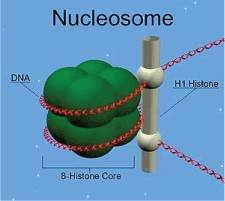 |
This means that the idea that MECP2 is a transcription factor - a protein that turns on or off just a few genes - is almost certainly wrong. "Most transcription factors exist in just 10,000 to 100,000 molecules per cell," says Professor Bird.
So if MECP2 is not a transcription factor what is it? What is it doing in normal cells that it fails to do in girls with Rett Syndrome?
"We know it tracks the level of DNA methylation," says Professor Bird. "Where there's none it goes down; where there's lots it goes up. It then affects the level of histone acetylation in that region. 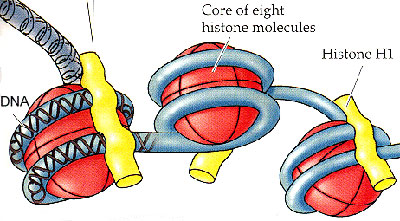
"When you take MECP2 away histone acetylation goes up all over the genome. But we don't know if this is a bystander effect or the key to what's wrong in Rett Syndrome. We are planning an experiment to find out.
I'm optimistic that we will. But it's going to take us a year to set it up. I want to do it right now. I'm excited about it.
Reversal
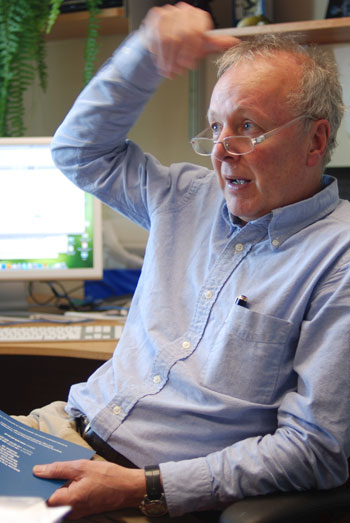 The results of the most startling experiment on Rett Syndrome, carried out at the Wellcome Trust Centre for Cell Biology, were published in 2007, says Professor Bird. "First we stopped the cells in a mouse from producing the protein MECP2.
The results of the most startling experiment on Rett Syndrome, carried out at the Wellcome Trust Centre for Cell Biology, were published in 2007, says Professor Bird. "First we stopped the cells in a mouse from producing the protein MECP2.
"The males died and the females developed Rett Syndrome, just as humans do."
But what they found next was a surprise. "We removed the stop, so that the cells started producing MECP2 again," says Professor Bird. "And the mouse, which was close to death, got almost completely better."
This was unexpected. "Once you get neurological problems, it's usually too late. They can't be reversed. Or so everybody thought. This experiment showed that assumption was wrong, at least for Rett Syndrome. And it raises the possibility that it might be wrong for other developmental disorders too, such as Fragile X."
This does not mean a cure for Rett Syndrome is just round the corner, he cautions. "In the mouse, we stopped and then started again a gene that worked well. In Rett Syndrome, the MECP2 gene does not work. So it'll be much harder to find a cure."
Gene therapy is one possibility, he says. "This has been talked about for a long time and for a number of diseases, but there are still very few examples that work.
"We're now collaborating with people in the States who have experience of gene therapy. It's a tall order, a long shot. Mind you, if I'd been asked if the reversal experiment would have worked, I would probably have said, 'No'.
"But it did."
Page with all definitions
Words used in pop-ups
| acetyl group | amino acid | bonded | breed | carbonyl | chromosome |
| complex | compound | conception | DNA | expressed | expression |
| fertilisation | functional group | genes | genome | inherit | membrane |
| methyl group | molecule | mRNA | nervous system | organelle | organic chemistry |
| polypeptide | protein | protoplasm | regulate | ribosome | sequence |
| species | structure | template | transcription | translate |
For other websites and resources relevant to this science story try the

